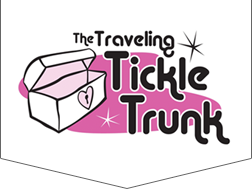Throwback Thursday - Anti-Masturbation Devices
Today, for Throwback Thursday, I thought that, instead of looking at masturbation tools from days gone past, I would look at anti-masturbation tools. Yes, this was absolutely a thing. In the United States, from the mid 1850's to the early 1920's there were 36 patents granted for devices designed to prevent masturbation - or to prevent erections, or nocturnal emissions, or all of the above. It's interesting to note that it seems all of these devices related to penises in some way. Was female masturbation not considered a problem? Or was it that no one thought that women actually masturbated?
Some of the inventions were designed to make it impossible for the person to get their hands on their penis. For example, Jonas Heyser patented a chastity belt in 1911 that was made of metal and had various straps on it that could be locked.

What is truly frightening about this device is that Heyser intended it for use on patients who were confined to mental hospitals - supposedly to protect them from themselves.
What is rather interesting and somewhat amusing about it is that more modern versions of this are now used for a variety of kink and powerplay activities.
Many of the devices were designed to simply prevent erections by making it uncomfortable or painful. The chastity belt would have served this purpose too, but there were also much smaller devices like the Jugem Penis which was a simple ring with sharp metal teeth. These would dig into the penis as it grew larger. (again, similar devices are used now by people who enjoy a bit of consensual cock and ball torture).
To me, the strangest of the devices are the ones that are designed to alert a person to the fact that they are having an erection while they are sleeping. To the people who designed these things, masturbation was considered a no no, partly because it was 'spilling one's seed' without the intention of the possibility of procreation. It stands to reason then that they were also not fond of nocturnal emissions (wet dreams). One patent was for a metal penis sheath that had clips which attached to the public hair. When the penis got bigger, it would push against the sheath, pulling it down and causing the clips to tug on the pubes. This, it was assumed, would wake the person up so they could stop themselves from being aroused. (how that last part was supposed to work, I'm still not entirely sure - how do you stop yourself from becoming aroused?).
Another, rather more elaborate, device was underwear, of sorts, that was attached to a complicated structure of tubes connected to a supply of cold water. When the penis became erect, it would put pressure on a valve connected to a tube that would release cold water into the undies, thus effectively killing the erection. No, I am not making this up.

I'm not sure if this was ever actually used. How anyone could sleep with this enormous structure attached to them is beyond me. Perhaps that's how it actually worked. No one could get an erection with all of that stuff going on.
From a 2018 perspective, this may all seem bizarre and downright comical. It's incredible to us now that anyone would go to such great lengths to prevent something that seems so harmless. And yet to this day, people are still actively shamed and punished for touching their own bodies. Genital surgeries that have the effect of making masturbation and sexual pleasure much more difficult are still performed against peoples' will. We are really not that far removed from the thought process that produced these devices.
These devices were likely invented out of a belief that teaching people to restrain their sexual urges would help them be healthier and happer, but I'm certain they would have had the opposite effect. In my 20 years of working in sexual health education, I have spoken to many people who have been traumatized and damaged by the message that their natural sexual curiosity around their own body is shameful, sinful, or harmful.
Few things make me happier than when someone comes into my store and picks out a exciting new toy that they can use to explore their body and learn new ways of experiencing pleasure - all on their own. There is something just a bit rebellious about knowing that history and then watching people claim the right to do what they want with their own bodies - without shame.
We have definitely come a long way. I haven't looked at recent patent applications but I would guess that patents for anti-masturbation devices are few and far between these days. But we still have a long way to go. And that's why we still need international masturbation month.

